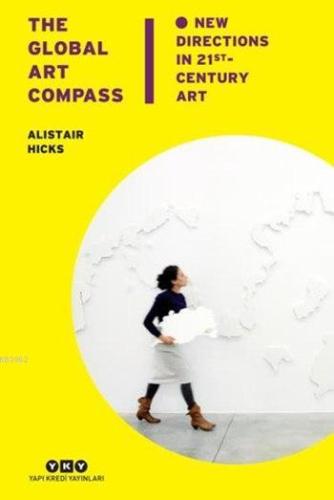9789750834523
664806

https://www.sehadetkitap.com/urun/the-global-art-compass-new-directions-in-21st-century-art
The Global Art Compass; New Directions İn 21st. Century Art
38.52
See the art, listen to the artist, trust your responses.
The Global Art Compass shows us how to navigate the complex
maze of the contemporary art world and unravel the intricacies of art today.
In the past, writers and critics such as Goethe, Ruskin and Clement Greenberg perpetuated particular ideas about art and even dictated these ideas to the artists themselves. Since then, however, artists have rebelled. They no longer have to follow one prevailing theory or head for any particular city. New York, London, Paris, Berlin and Beijing are all great places to make art, but none today has a stranglehold on creation. In The Global Art Compass, Alistair Hicks demonstrates his belief that no single curator, critic or dealer can or should monopolize our view of what is happening in the art world today. Instead, he shows us how exciting and rewarding
it is to navigate our own way through the art world by listening to the artists themselves. Organized by continent and including extracts from interviews with artists as diverse as Laure Prouvost (France), Anri Sala (Albania), Gabriel
Orozco (Mexico), Sandra Gamarra (Peru), Cai Guo-Qiang (China) and Nandan Ghiya (India), among many others, The Global Art Compass is an account of the author's explorations in the contemporary art world and a manifesto for how
we might all discover our own inner art compass to help steer us towards the art that we find most meaningful and engaging. Now with a new chapter titled "The Compass
in Turkey" written specially for this edition, The Global Art Compass shows that the
preoccupations of artists in the twenty-first century are largely universal: that ever-faster communications are balanced by a resistance to globalization; that while art is seen by many as a commodity, it also has the power to be a regenerative tool; and that, despite an increasing confidence in an ever-growing range of media,
artists are often searching for simple stories that will reach out to bigger audiences and change their lives for the better.
See the art, listen to the artist, trust your responses.
The Global Art Compass shows us how to navigate the complex
maze of the contemporary art world and unravel the intricacies of art today.
In the past, writers and critics such as Goethe, Ruskin and Clement Greenberg perpetuated particular ideas about art and even dictated these ideas to the artists themselves. Since then, however, artists have rebelled. They no longer have to follow one prevailing theory or head for any particular city. New York, London, Paris, Berlin and Beijing are all great places to make art, but none today has a stranglehold on creation. In The Global Art Compass, Alistair Hicks demonstrates his belief that no single curator, critic or dealer can or should monopolize our view of what is happening in the art world today. Instead, he shows us how exciting and rewarding
it is to navigate our own way through the art world by listening to the artists themselves. Organized by continent and including extracts from interviews with artists as diverse as Laure Prouvost (France), Anri Sala (Albania), Gabriel
Orozco (Mexico), Sandra Gamarra (Peru), Cai Guo-Qiang (China) and Nandan Ghiya (India), among many others, The Global Art Compass is an account of the author's explorations in the contemporary art world and a manifesto for how
we might all discover our own inner art compass to help steer us towards the art that we find most meaningful and engaging. Now with a new chapter titled "The Compass
in Turkey" written specially for this edition, The Global Art Compass shows that the
preoccupations of artists in the twenty-first century are largely universal: that ever-faster communications are balanced by a resistance to globalization; that while art is seen by many as a commodity, it also has the power to be a regenerative tool; and that, despite an increasing confidence in an ever-growing range of media,
artists are often searching for simple stories that will reach out to bigger audiences and change their lives for the better.
Yorum yaz
Bu kitabı henüz kimse eleştirmemiş.














